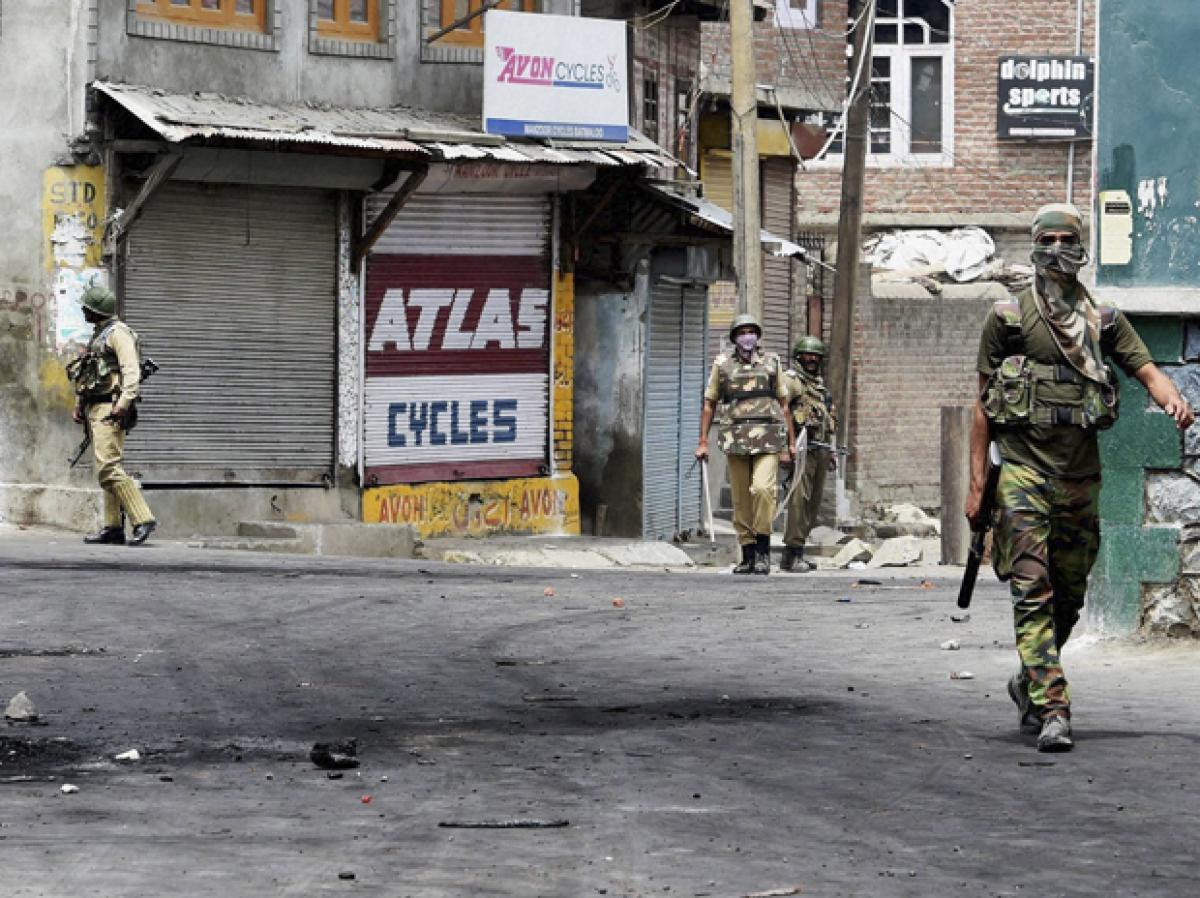Live
- GMR Airports Unveils AI-Powered Digital Twin Platform to Transform Airport Operations
- India poised to become leading maritime player: PM Modi
- Top Causes of Kidney Stones and How to Recognize Silent Symptoms
- India’s renewable energy capacity logs 14.2 pc growth at 213.7 GW
- Winter Session of Odisha Assembly adjourned sine die
- Biden calls Trump's tariff approach 'major mistake'
- After Drama Over Eknath Shinde’s Chief Minister Race, Maharashtra Cabinet Formation Faces New Tensions
- Egyptian FM, Blinken discuss recent developments in Syria
- Iran's supreme leader says Syria's developments result of US-Israeli 'plot'
- Elon Musk to Purchase $100 Million Luxury Mansion Next to Donald Trump's Mar-a-Lago, Report Reveals
Just In

Srinagar:Normally, unrest is good for the media business. Newspapers thrive on bad news, with circulation and pages often going up to cope with the demand and the sudden spurt in news.
Srinagar:Normally, unrest is good for the media business. Newspapers thrive on bad news, with circulation and pages often going up to cope with the demand and the sudden spurt in news.
Not so in Srinagar.
The ongoing curfew in the wake of militant commander Burhan Wani's killing and its violent aftermath have hit the newspaper industry here hard.
Most English and Urdu dailies in the Kashmir Valley have drastically reduced the number of pages and are still battling to get their editions distributed in a city largely under curfew since July 9.
And all of them have been forced to cut down on circulation.
The worst hit are the English-language Greater Kashmir and Rising Kashmir which have scaled down the number of pages to 8-10 from 16-18.
Kashmir Reader, an English 12-page daily, now has only eight pages and its circulation is down by 40 per cent.
The story is no different for the two most widely read Urdu newspapers, Kashmir Uzma and Srinagar Times.
Since authorities imposed curfew after the July 8 killing of Wani in south Kashmir, a death that triggered street violence leaving at least 38 people dead and hundreds injured, the Kashmir Valley has more or less remained cut off from Srinagar.
Even in Srinagar, hawkers don't have access to places where curfew is enforced strictly.
"Since we are not able to circulate the paper, we have drastically reduced the number of copies we publish," a manager at Kashmir Reader told IANS.
"Also, our circulation has dropped as distribution is only possible in a few areas where restrictions are not strict," he added.
The newspapers are also facing shortage of advertisements from private businesses in Jammu and Kashmir. Some are not even getting government ads.
"We have no ads these days, none from the Information Department," moaned the Kashmir Reader manager.
The only ads the dailies have in plenty are announcements cancelling wedding receptions.
Shujaat Bukhari, editor-in-chief of Rising Kashmir, said the reason for the decline in the circulation of newspapers was that a major part of the Kashmir Valley was not accessible.
"The entire south Kashmir is cut off. Baramulla, Sopore and other areas in north Kashmir are also difficult to reach. So we have cut down the circulation," Bukhari told IANS.
The otherwise 16-page Kashmir Uzma now has eight pages and is distributed to only a fourth of its subscribers.
Said Abdul Rasheed, a hawker: "I used to distribute at least 1,000 copies of Uzma. Now I distribute only 200-400 because of the restrictions in the areas I am assigned."
Outstation newspapers have virtually stopped coming to Srinagar.
While reporters of all the newspapers remain in the field in Srinagar, the editorial and non-journalist staff reaches the office on the strength of Press Cards which act like Curfew Passes.
But the drop in circulation and lack of ads are not the only problems the industry is battling. With anger simmering on the streets, mobs have turned violently against the media which they feel is insensitive to their side of the story.
Many journalists working for the local and national media could not interview people at hospitals.
"I wanted to talk to an injured man in a hospital. When he learnt I am a reporter, he became violent and threatened to beat me. He also snatched and tore up my notebook," a journalist told IANS.
"I understand the anger. They (people) think every journalist is working for mainstream TV channels which they hate," the journalist added.

© 2024 Hyderabad Media House Limited/The Hans India. All rights reserved. Powered by hocalwire.com







